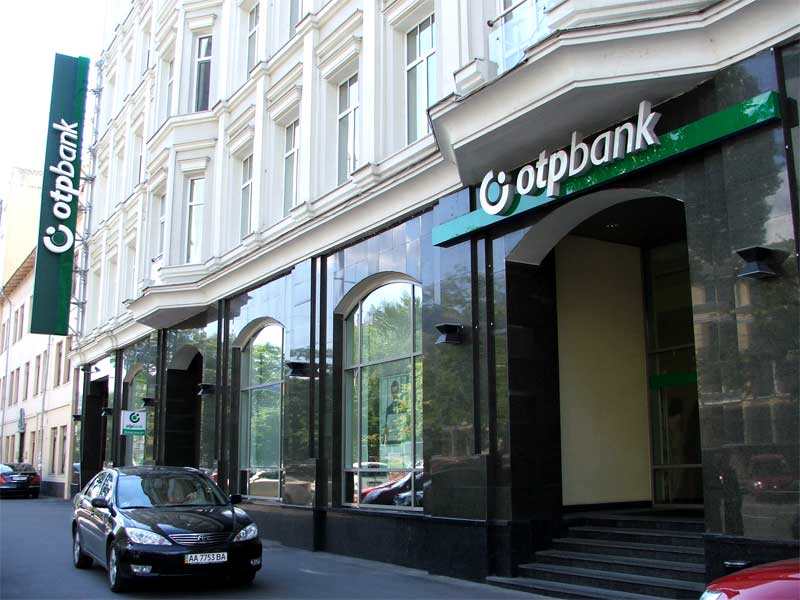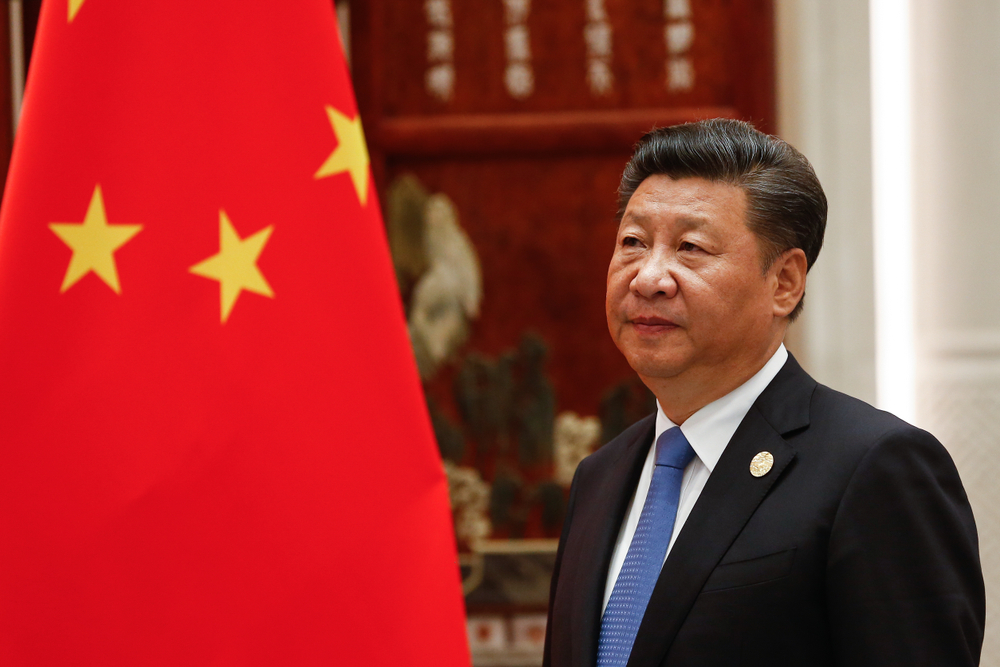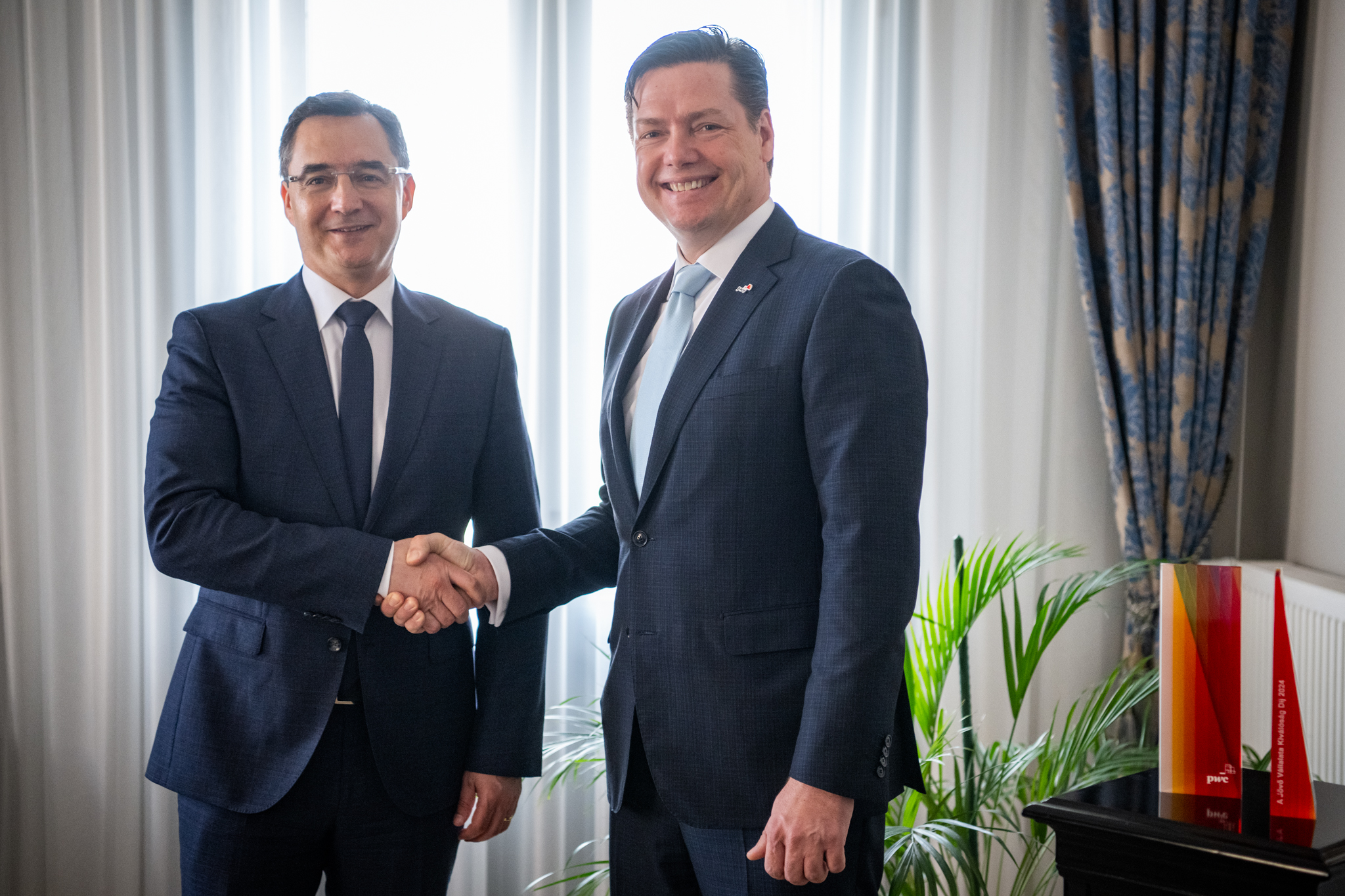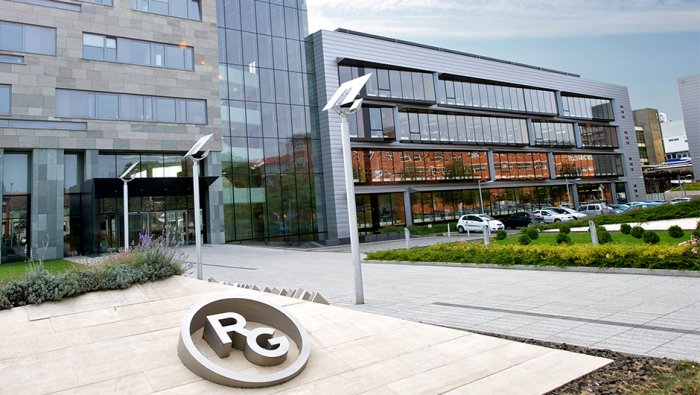Domestic Consumption, Labor, and FDI: 3 Pillars to Support Growth
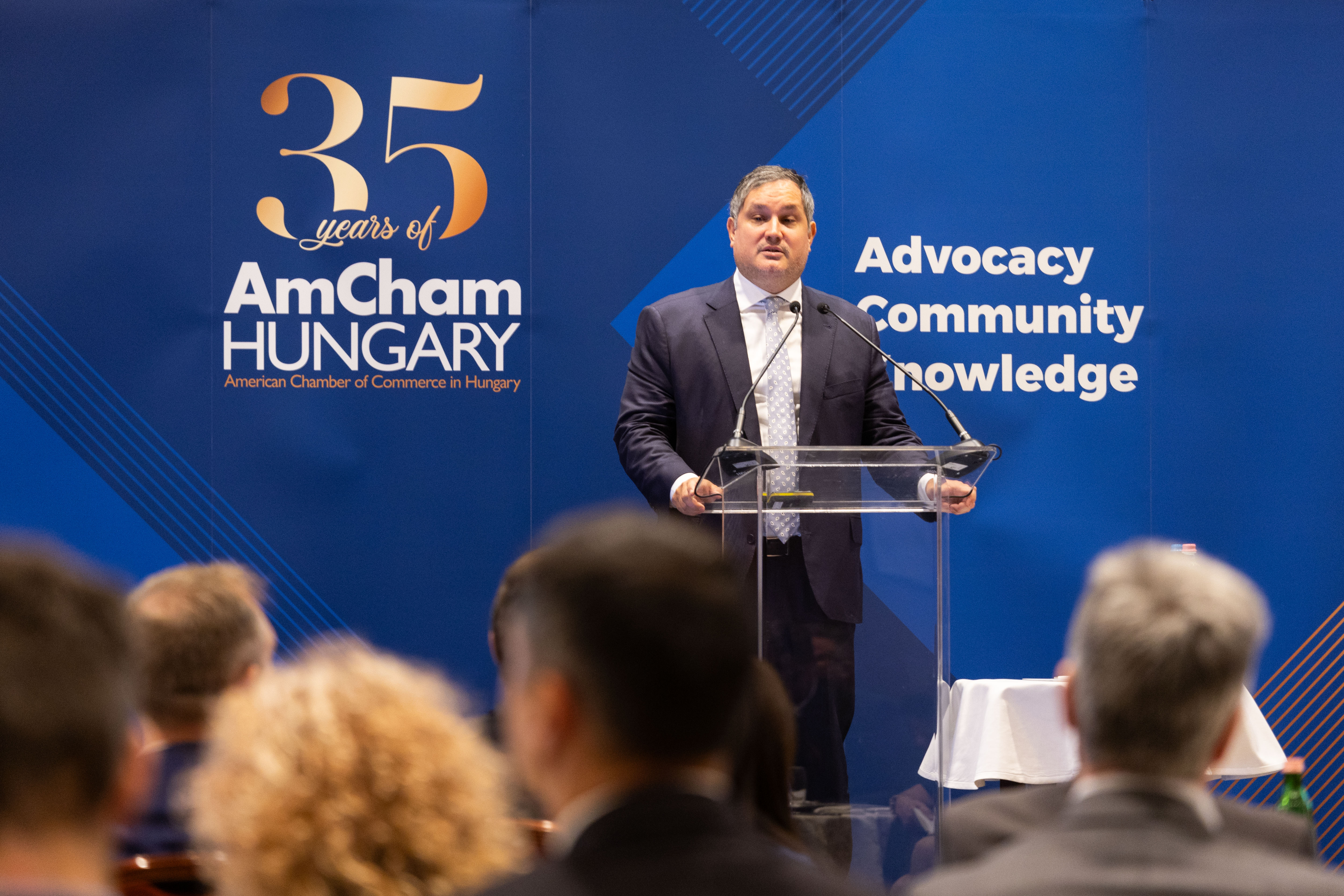
Márton Nagy, Minister of National Economy.
Photo by Hajnalka Hurta / AmCham.
Minister of National Economy Márton Nagy was the keynote speaker at a business forum organized by the American Chamber of Commerce in Hungary at the InterContinental Budapest hotel on Feb. 1.
Nagy began by welcoming the market’s positive reaction to the news announced that morning that the European Union had agreed on a HUF 50 billion package of aid for Ukraine, funding for which had been blocked at an earlier summit in December by a Hungarian veto.
His presentation, entitled “Growth Must be Restored in 2024,” outlined measures the government is taking to support economic recovery this year. But first, Nagy wanted to underline the importance of America to the Hungarian economy.
“The United States is now the third biggest investor in Hungary related to FDI stock,” he said. “That makes the U.S. a very important counterpart. The economic cooperation is strong.”
American firms in Hungary had created 89,000 jobs and generated a net revenue in Hungary of HUF 7.753 trillion, according to 2021 figures, the minister said. The trade balance was improving in Hungary’s favor, and the United States was the second most important trade partner after Germany.
One challenge for the relationship was the termination of the United States-Hungary taxation treaty, which took effect from Jan. 1 and which Nagy described as “a political question rather than economic.” Speaking for the government, he accepted that “we have work to do” to restore the treaty but asked that U.S. companies based here also help lobby for it.
Returning to his central theme, he said the economy would perform much better this year, provided domestic demand, which had remained sensitive to factors such as the price of food, could rebound.
German Drag?
“The big question for the markets is what will happen with exports. Here, the German market is very important,” Nagy told AmCham. But, as he later made clear, there might not be much help from this quarter: “The German economy was in recession last year and will be in recession this year.”
Fiscal policy in the form of government spending cannot offer much support to the Hungarian economy either. Then again, state-sponsored projects had formed too high a share of the construction market. They were now heading for a “much more normal” 4%, he said.
“The budget deficit was at 6% [of GDP in 2023]; this year, we cannot operate at the same level.”
The minister said monetary policy could offer support, but Nagy again repeated recent government criticism of the National Bank of Hungary, saying “[monetary] easing is behind other central banks.”
Inflation was probably at 4% in January, he said. Holding the central bank rate at 10% “does not support economic recovery.” Nagy said he did not know what lay behind that decision. “You would have to ask the MNB, which is independent.”
What could support the economy would be the credit markets, EU funds, and foreign direct investment, the minister argued. Economic policy would help by targeting three areas: growing household consumption, stimulating domestic production and investment, and finding reserves in the labor market, Nagy promised.
Household consumption is doubly important because it also affects how much comes into central budget coffers in the form of value-added tax.
“The Hungarian taxation system is consumption-based. This is not true for every other country,” the national economy minister pointed out.
Building a Virtuous Circle
Nagy said 2023 had seen a “very negative scenario,” with real wage growth contracting at a rate not seen since 2009-2011. What was required now was a virtuous circle where growing earnings would support greater consumption, which would help domestic industries grow and invest, spurring growth in company profits and thus allowing for real earnings to grow even further.
Nagy cautioned that a degree of patience is also required, as there is usually a six-to-nine-month delay between a return to positive real wage growth and an increase in retail sales.
The government has several programs to help stimulate domestic production and investment, including subsidized credit through the Széchenyi Card, the HUF 700 bln Gábor Baross Reindustrialization Program, a HUF 33 billion scheme targeting local food suppliers, and EUR 5 bln in GINOP Plus (Economic Development and Innovation Operational Program) funds.
Regarding the labor market, a crucial area of focus will be increasing the activity rate from the present 77.8% to a target of 85%.
“Between the ages of 25 and 55, the activity rate is 95%: basically, everybody wants to work, and everybody has a job,” Nagy said. Therefore, the target cohorts in Hungary would be those under 25 and those older than 55, a potential reserve Nagy estimated at 100,000 people. Bringing them into the workforce would be “a tough job, but we have to improve. [.…] We have to activate everybody who wants to work,” he added.
Beyond that, the other resource, where no Hungarian workers could be found, would be regulated numbers of guest workers. Nagy put their level at 121,000 last year, including some 45,743 Ukrainian and Serbian citizens who do not need special permission to work in Hungary.
Successfully targeting these three areas – domestic consumption and investment, the labor market and attracting even more FDI – would lead to restored economic growth in 2024, Nagy insisted.
“We do not need to fear inflation anymore; it went as fast as it came,” he told his audience. Reiterating that Hungary could not expect much in the way of help from a stagnant German economy, internal demand and investment will be crucial.
Responding to a question from the floor, Nagy seemed to indicate that policies around women retiring early or staying at home to raise more children might need tweaking, remarking that when they were introduced, Hungary did not have full employment and the priorities lay elsewhere.
To another question about investing in digitization and automation, Nagy said regarding supportive subsidies, “money is not the question.” Multinationals are prepared to take the necessary steps, he noted but suggested this was less often the case with Hungarian SMEs, although it would certainly help them become tier one or tier two suppliers.
2024 sees AmCham Hungary celebrate the 35th anniversary of its foundation in 1989 when 32 companies came together to form the first American business chamber in Eastern Europe. Events are planned throughout the year, including an anniversary gala on June 7 and the launch of its Diversity Impact Awards, recognizing “outstanding efforts in diversity and inclusion” and reflecting AmCham’s “commitment to an equitable and supportive business environment.”
This article was first published in the Budapest Business Journal print issue of February 9, 2024.
SUPPORT THE BUDAPEST BUSINESS JOURNAL
Producing journalism that is worthy of the name is a costly business. For 27 years, the publishers, editors and reporters of the Budapest Business Journal have striven to bring you business news that works, information that you can trust, that is factual, accurate and presented without fear or favor.
Newspaper organizations across the globe have struggled to find a business model that allows them to continue to excel, without compromising their ability to perform. Most recently, some have experimented with the idea of involving their most important stakeholders, their readers.
We would like to offer that same opportunity to our readers. We would like to invite you to help us deliver the quality business journalism you require. Hit our Support the BBJ button and you can choose the how much and how often you send us your contributions.

